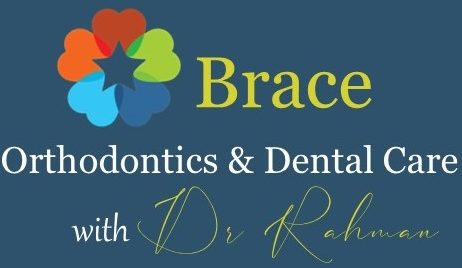Orthodontic treatment plays a crucial role in correcting misaligned teeth and improving oral health. While this field of dentistry requires specialized knowledge and expertise, some general dentists attempt to perform orthodontic procedures without the necessary qualifications. This practice, known as orthodontic malpractice by general dentists, can have serious consequences for patients. In this article, we will delve into the word of orthodontic malpractice in context to Bangladesh, exploring the signs, risks, and real-life examples. We will also discuss why general dentists should not perform orthodontic procedures, the importance of choosing a qualified orthodontist, and steps to prevent orthodontic malpractice.
Understanding Orthodontic Malpractice by General Dentists
Orthodontic malpractice refers to situations where general dentists perform orthodontic procedures without proper training, experience, or qualifications. Orthodontic treatment involves the use of braces, aligners, and other dental appliances to correct misaligned teeth and jaw irregularities. This specialized field requires in-depth knowledge of dental anatomy, growth and development, and the ability to diagnose and treat complex orthodontic issues.
When general dentists venture into orthodontic treatment without the necessary expertise, it can result in serious complications. These complications may include improper alignment, damage to teeth or gums, temporomandibular joint (TMJ) disorders, and even facial asymmetry. The consequences of orthodontic malpractice can be long-lasting and may require corrective treatment by a qualified orthodontist.

How does it commonly start for a patient in Bangladesh?
There is thousands of certified general dentist in Bangladesh. And only nearly 200 of recognized specialist orthodontist who holding FCPS or MS degree by completing five years of higher education after passing basic dental degree (BDS) and not all of them in practice. But if you Strat to search for orthodontic treatment or orthodontist and walk around Dhaka City or any other city in Bangladesh you can most of the dental clinic’s name sub headed by orthodontic care. Now you can imagine how many general dentist engaged themselves with orthodontic care.
You may think what is the fact behind this courage of treating orthodontic patients by a general dentist where a specialist orthodontist has to complete 5 years of exclusive training and education in Bangladesh. General dentists attend in some short course of few (4/5)months, which is cheaper, to learn some very insufficient basic idea to deal the orthodontic cases come to them. They avoid referring to specialist and offer treatment al lower cost. I believe you would be able to understand the reason of not referring the patient to specialist and it is a common culture in dental practice of Bangladesh . In Bangladesh most of the people do not know about specialist orthodontist and they initially visit to general dentist for this treatment. You can imagine now what is going on to the most of the orthodontic patients in Bangladesh!
Case Studies: Real-Life Examples of Orthodontic Malpractice by General Dentists
Real-life examples of orthodontic malpractice by general dentists serve as a stark reminder of the risks involved in seeking orthodontic treatment from unqualified professionals. Here are two notable case studies:
- Case Study 1: Improper Alignment A patient sought orthodontic treatment from a general dentist to correct their crooked teeth. However, due to the dentist’s lack of expertise, the treatment resulted in improper alignment. The patient’s bite worsened, leading to discomfort while eating and difficulty in maintaining oral hygiene. The patient eventually had to undergo corrective treatment by an orthodontist to achieve the desired results.
- Case Study 2: Inadequate Diagnosis Another patient opted for orthodontic treatment from a general dentist to address their overbite. However, the dentist failed to diagnose an underlying jaw misalignment issue. As a result, the treatment failed to provide the desired outcome, and the patient continued to experience jaw pain and difficulties with chewing. The patient eventually consulted an orthodontist who identified the root cause and provided appropriate treatment.
These case studies highlight the importance of seeking treatment from qualified orthodontists who possess the necessary knowledge and experience to diagnose and treat complex orthodontic issues.
The Risks of Orthodontic Treatment by General Dentists
Orthodontic treatment carries inherent risks, even when performed by qualified orthodontists. However, the risks become significantly higher when general dentists attempt to perform these procedures without the appropriate training and expertise. Some of the risks associated with orthodontic treatment by general dentists include:
- Improper diagnosis: General dentists may lack the expertise to accurately diagnose orthodontic conditions, leading to ineffective or inappropriate treatment plans.
- Inadequate treatment planning: Orthodontic treatment requires careful planning and consideration of various factors such as tooth movement, jaw alignment, and facial aesthetics. General dentists may lack the knowledge to develop comprehensive treatment plans, resulting in suboptimal outcomes.
- Complications and side effects: Improperly performed orthodontic procedures can lead to a range of complications and side effects, including tooth and gum damage, root resorption, temporomandibular joint disorders, and even facial asymmetry.
- Extended treatment duration: Orthodontic treatment by general dentists may take longer than necessary due to a lack of expertise in efficient treatment techniques. This can result in increased discomfort and inconvenience for the patient.
It is essential to understand these risks and make informed decisions when choosing an orthodontic provider.
Why General Dentists Should Not Perform Orthodontic Procedures
General dentists undergo extensive training to provide comprehensive dental care, including preventive, restorative, and cosmetic treatments. However, orthodontic treatment requires specialized education and hands-on experience beyond what is covered in general dental programs. There are several reasons why general dentists should not perform orthodontic procedures:
- Lack of specialized training: General dentists typically receive limited training in orthodontics during their dental education. This training is insufficient to develop the expertise required for complex orthodontic treatments.
- Limited experience: Orthodontics is a highly specialized field that requires extensive clinical experience to diagnose and treat various orthodontic conditions. General dentists may lack the necessary case exposure to effectively manage complex cases.
- Evolution of orthodontic techniques: Orthodontics is a dynamic field with ongoing advancements in treatment techniques and technology. Keeping up with these advancements requires continuous education and specialized training, which general dentists may not prioritize.
- Potential for complications: Orthodontic treatment involves making significant changes to the position and alignment of teeth and jaws. Inadequate knowledge and skill can lead to complications that may require additional corrective treatment.
Given these reasons, it is crucial for general dentists to refer patients requiring orthodontic treatment to qualified orthodontists who have the necessary expertise and experience.
How to Prevent Orthodontic Malpractice
Preventing orthodontic malpractice starts with informed decision-making and proactive steps. Here are some measures patients can take to minimize the risk of orthodontic malpractice:
- Research and ask questions: Before undergoing orthodontic treatment, research potential providers thoroughly. Look for qualifications (FCPS or MS in Orthodontics). During initial consultations, ask questions about the orthodontist’s education, training, and treatment philosophy.
- Seek multiple opinions: If you receive a recommendation for orthodontic treatment from a general dentist, it is advisable to shift to qualified orthodontist. This ensures that you receive an accurate diagnosis and appropriate treatment plan.
- Review treatment plans: Understand the proposed treatment plan, including the expected duration, procedures involved, and potential risks. Ensure that the any qualified orthodontist provides clear explanations and addresses your concerns.
- Stay involved in treatment: Actively participate in your orthodontic treatment by following the orthodontist’s instructions, attending regular appointments, and maintaining good oral hygiene. This helps ensure optimal treatment outcomes and early identification of any issues.
By taking these preventive measures, you can significantly reduce the risks associated with orthodontic treatment and contribute to a positive treatment experience.
Legal Implications and Recourse for Orthodontic Malpractice
Patients who have experienced orthodontic malpractice by general dentists may have legal recourse to seek compensation for damages and corrective treatment. The legal implications of orthodontic malpractice vary depending on the jurisdiction and specific circumstances of each case. However, some common legal avenues for seeking recourse include:
- Filing a complaint: Patients can file a complaint with the dental licensing board or regulatory body Bangladesh Medical and Dental Council (BMDC). This council have the authority to investigate complaints and take disciplinary actions against dentists found guilty of malpractice or Citizens of Bangladesh can easily throw complaints or complain against any health public or private hospital or clinic to the authority (DGHS) via Shastho Batayon 16263.
- Seek Compensation : Compensation can cover the costs of corrective treatment, additional dental procedures, and ongoing oral healthcare related to the malpractice
Conclusion: Ensuring Safe and Effective Orthodontic Treatment
Orthodontic treatment is a valuable investment in our oral health and overall well-being. However, it is crucial to approach orthodontic treatment with caution and choose qualified orthodontists to ensure safe and effective outcomes. Orthodontic malpractice by general dentists can have serious consequences, including improper alignment, complications, and the need for corrective treatment.
By understanding the signs of orthodontic malpractice, the risks involved, and the importance of choosing a qualified orthodontist, patients can make informed decisions and protect themselves from potential harm. Taking proactive steps such as seeking multiple opinions, verifying credentials, and actively participating in treatment can minimize the risk of orthodontic malpractice.
In cases where orthodontic malpractice has occurred, patients should seek legal advice to understand their rights and explore potential avenues for compensation. By holding accountable those responsible for orthodontic malpractice, patients can not only seek justice for themselves but also contribute to improved standards of care within the dental profession.
Remember, when it comes to orthodontic treatment, your oral health and well-being should always be the top priority. Choose qualified orthodontists and ensure that you receive safe and effective treatment for a confident and healthy smile.
Rate this article

